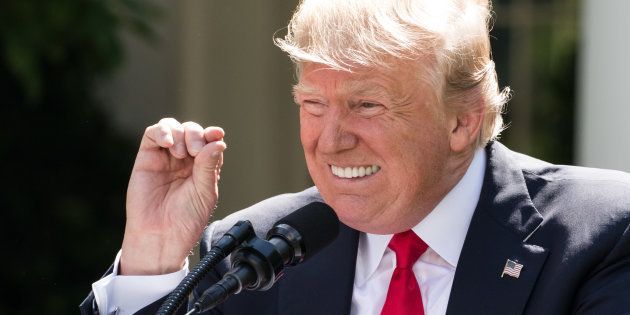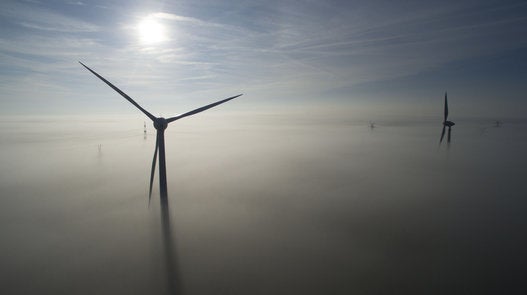
India and China came in for several mentions as the American President Donald Trump listed the main reasons why the United States was withdrawing from the landmark international Paris Agreement to cut greenhouse emissions.
As it happens, the claims that Trump made were not quite true.
So, here's a quick check on what he said about India, and what the Paris climate deal actually says.
In his long speech, Trump said that India's participation in the Paris climate deal is "contingent on receiving billions and billions and billions of dollars in foreign aid from developed countries." Which essentially means that India's participation depends on the foreign aid (billions of dollars) that it will receive from the developed countries.
These are Trump's exact words:
"Under the agreement, China will be able to increase the emissions by a staggering number of years — 13. They can do whatever they want for 13 years. Not us. India makes its participation contingent on receiving billions and billions and billions of dollars in foreign aid from developed countries. There are many other examples but the bottom line is that the Paris Accord is very unfair at the highest level to the United States."
Not true.
India's 2015 pledge for the climate deal makes no mention of 'billions of dollars'.
"The successful implementation of INDC (Intended Nationally Determined Contributions) is contingent upon an ambitious global agreement including additional means of implementation to be provided by developed country parties, technology transfer and capacity building following Article 3.1 and 4.7 of the Convention," the deal said.
India has called on the US and other fully developed countries to share technologies that help decrease carbon emissions, but it did not say that it wants 'billions of dollars' to be a part of this agreement.
Trump's information about China was also not true.
Yes, China has pledged to halt the growth in its carbon emissions by 2030, 13 years from now, but the country, as NPR notes in this piece, is on track to beat that target date by many years.
In fact, India is also ahead of schedule in meeting its Paris commitments. As part of its plan, India has set a goal of producing 40 percent of its electricity from non-fossil fuel sources by 2030. And it is inching closer to that goal.
Next, Trump said that while India is allowed to double up its coal production until 2020, US can't build any coal plants.
Trump's words:
"India will be allowed to double its coal production by 2020. Think of it. India can double its coal production. We're supposed to get rid of ours. Even Europe is allowed to continue construction of coal plants.
In short, the agreement doesn't eliminate coal jobs. It just transfers those jobs out of America and the United States and ships them to foreign countries. This agreement is less about the climate and more about other countries gaining a financial advantage over the United States. The rest of the world applauded when we signed the Paris Agreement. They went wild. They were so happy."
False. There is nothing in the agreement that stops the United States from building coal plants just like there's nothing that allows China and India to build them.
A Washington Post article notes, that the plans are not legally binding. Different countries have been treated differently only for one reason — developed countries, on a per capita basis, produce more greenhouse gases than developing countries.
The United States in 2015 produced more than double the carbon dioxide emissions of China, and eight times as much as India, on a per capita basis.
In fact, the reduced costs for natural gas have forced the closure of coal plants across the world. China has just announced that it will cancel plans to build more than 100 coal-fired plants.
Meanwhile, in its pledge, India said that coal will continue to dominate power generation in the future but that the government has taken "several initiatives to improve the efficiency of coal based power plants and to reduce its carbon footprint."
These are some of the initiatives —
- All new, large coal-based generating stations have been mandated to use the highly efficient supercritical technology.
- Renovation and Modernisation (R&M) and Life Extension (LE) of existing old power stations is being undertaken in a phased manner.
- Introduction of ultra-supercritical technology, as and when commercially available, is part of future policy.
- Stringent emission standards being contemplated for thermal plants.
- India also quadrupled its cess on coal from ₹50 to ₹200. The coal cess translates into a carbon tax equivalent, using the emission factor for coal, of around USD 2 per tonne.
Clearly, Trump didn't.
Also see on HuffPost:
um
